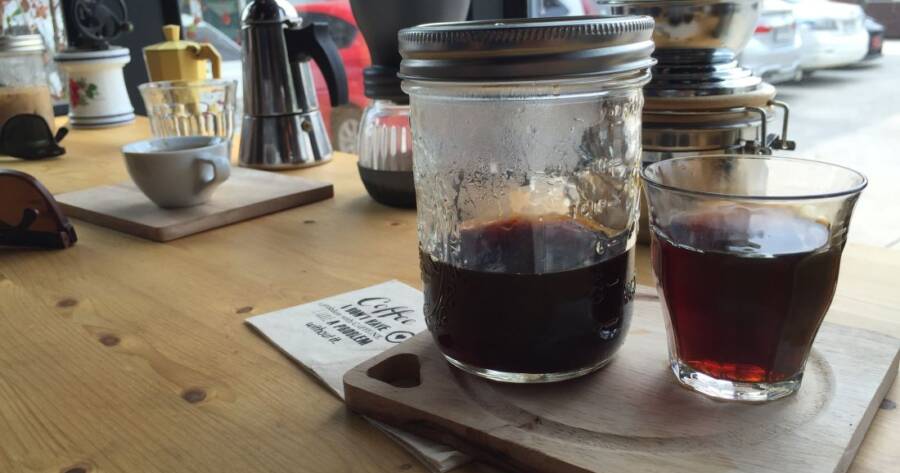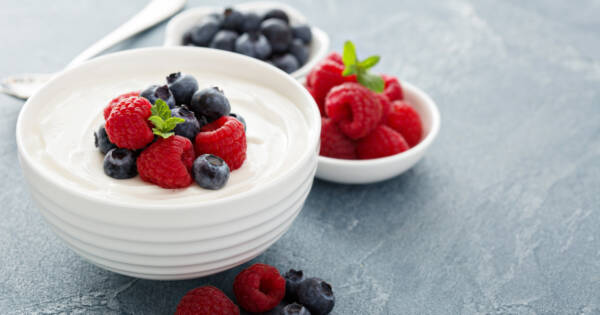The unmasked flavors and lower acidity of cold-brewed coffee keep sending coffee fanatics back for more. Although cold-brewed coffee is made with the same ground coffee beans as traditional, hot-brewed coffee, it is prepared in a different way, and the brewing procedure takes several hours.
As its name indicates, cold-brewed coffee is brewed using cold, cool, or room-temperature water. There are several cold-brewing techniques that work, depending on the strength of coffee you are looking for. The easiest technique involves steeping coffee grounds and water in one container, then straining the resulting coffee out. If you prefer the bitter taste of hot coffee, pouring your water over top of the grounds through a filter is the favored technique.
Whichever technique is used to make it, cold-brewed coffee has the same antioxidants and nutrients of hot-brewed coffee. The cold-brewed version, however, also has several attributes that differentiate it from hot-brewed coffee.
Less Acid
Cold-brewed coffee has roughly half the acidity of your typical hot-brewed coffee. Heat allows oils in coffee grounds to mix with coffee, but cool conditions do not release these acidic agents. Coffee with lower acidity is healthier for people, especially those afflicted with conditions such as acid reflux. Acid from coffee can alter the natural alkaline-acid balance in humans.
Natural Flavors
The lower amount of acidity in cold brews let the coffee’s true flavors take the lead. Those flavors can be fruity, nutty, chocolatey, and even sweet depending on the beans. These flavors are typically hidden by the bitter acidity and heat of hot-brewed coffee. The flavors of cold brews differ among the kinds of coffee beans, the locations they were grown, as well as how they were roasted. Coffee plant cultivation locations include South America, South East Asia, and Africa, with each region bringing their own unique blends.
Long Life
Hot-brewed coffee becomes stale roughly one day after it was brewed. In comparison, cold-brewed coffee retains its original taste much longer. It can last up to 10 days or even one month when kept in a sealed container in a refrigerator.
Home and Away
Coffee lovers can purchase cold brews at numerous restaurants and coffeehouses, but they also can make their own cold brews easily. We’ve included a recipe below!
This simple recipe is from TheDailyBeast.com:
- Pour 1 cup of coarsely ground coffee beans in a container, such as a mason jar. Ensure the container has a lid.
- Add 4 cups of cool or room-temperature water to the container.
- Stir the combination of coffee beans and water briefly.
- Put the lid on the container.
- Let the container’s ingredients steep for roughly 12 hours.
- Pour the container’s contents through a coffee filter, cheesecloth layers or sieve to remove the coffee grounds before drinking the coffee liquid. The liquid may need to be filtered twice to remove all the grounds.
French presses and other coffee makers can be used at home and commercially to make cold-brewed coffee. Many manufacturers of machines for hot-brewed coffee also make models for cold brewing, these cold-brew models vary in size, design and price.
- The Hario Cold Brew Pot, manufactured by Hario, is a 1-liter model that sells for $20 on SeattleCoffeeGear.com. It produces two to four cups of coffee in 12 to 24 hours, depending on your taste. It has a nylon filter basket and different sizes of suspended filter meshes to hold different sizes of coarsely ground coffee. Water poured over the grounds steeps in a glass container. The product is 5 1/2 inches wide, 5 inches deep and 12 inches tall.
- The Toddy Cold Brew System Home Model, made by Toddy, is $39.99 on BedBathAndBeyond.com. It holds up to 48 ounces of liquid and accepts cold water. During the cold-brewing process, its glass decanter sits below its high-density polyethylene plastic brewing container, which has a handle. The product includes a decanter lid, two filters that are reusable up to 10 times and a rubber stopper. The brewing container is 7 inches wide, 8 1/2 inches deep and 8 1/2 inches tall. The decanter is 5 inches wide, 5 inches deep and 8 1/2 inches tall.
- The Cold Bruer Slow Drip Cold Brew, made by Bruer, is $80 on Bruer.co. It produces 20 ounces of cold-brewed coffee in a minimum of four hours. Cool water placed in the product’s glass brewing container passes through the coffee grounds below, and cold-brewed coffee drips into the glass decanter. Moving the product’s stainless-steel valve revises the coffee’s strength. The brewing container’s handled lid is made of food-grade silicone. The coffee maker is 5 inches wide and deep, and it is 10 1/2 inches tall.
Adjustments and Uses
Whether steeped in a mason jar or coffee maker, the cold-brew coffee produced is usually a strong concentrate that is also called a syrup. Add water, milk or a different liquid to dilute it to the strength you desire. In general, mixing one portion of concentrate with the same amount of another liquid works well, but your taste may differ. Add hot water to the concentrate if you prefer to drink your cold-brewed coffee heated.
Another way to dilute the concentrate is to add regular ice cubes to it. If you do not want to dilute the concentrate but want to drink it cold, then one option is to freeze part of the concentrate into ice cubes and use them to cool the liquid concentrate.
Some coffee enthusiasts think cold brews taste weak compared to hot brews. Using more coffee grounds or less water in the brewing process increases the strength of the concentrate produced.
In addition to being a refreshment or refreshment base, a cold-brewed coffee concentrate can be added as flavoring to recipes. It also can be used to marinate food.
Advantages vs. Disadvantages
A disadvantage of cold-brewed coffee is the amount of time it takes to make. Many coffee drinkers do not want to wait hours for coffee, preferring the methods in which heat speeds the brewing time. Also, cold-brewed coffee does not have the aroma or flavor of hot-brewed coffee.
For fans of cold-brewed coffee, however, the beverage’s advantages outweigh its disadvantages.
 Kanthikachaaim / Shutterstock.com
Kanthikachaaim / Shutterstock.com


